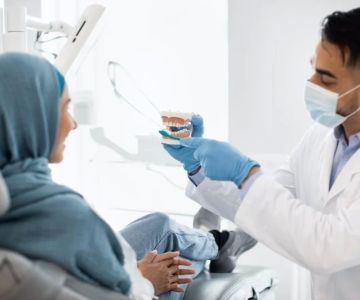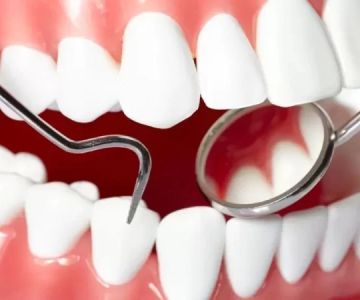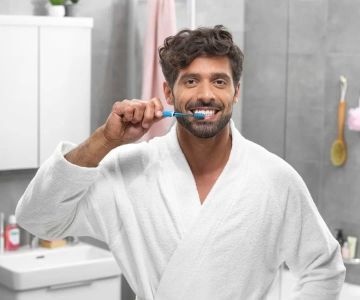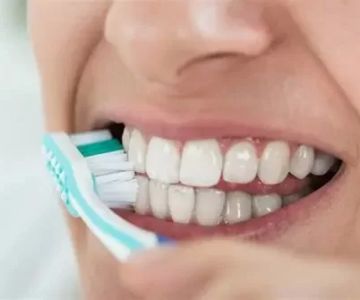How Often Should You Brush Your Teeth, and For How Long?
Maintaining oral hygiene is crucial for overall health, and the most basic practice within oral care is brushing your teeth. In the United States, dental professionals frequently emphasize the importance of regular brushing, yet many individuals still question the optimal frequency and duration. This article delves into expert guidelines, aiming to provide clarity on how often you should brush your teeth and for how long. Understanding these principles is not only essential for maintaining a bright smile but also for preventing dental issues such as cavities and gum disease.
1. Recommended Frequency: Twice a Day, Every Day
The American Dental Association (ADA) recommends brushing your teeth twice a day – once in the morning and once before bed. This routine helps remove food particles and plaque that accumulate over the course of the day. Brushing twice a day reduces the risk of cavities and also combats bad breath. An ADA study found that individuals who adhered to this routine experienced a significant reduction in tartar buildup, highlighting the protective benefits of regular brushing. Additionally, following this schedule can prevent the need for more extensive and costly dental treatments later on.
2. Ideal Duration: Two Minutes per Session
Spending a mere two minutes on each brushing session can significantly improve oral health, according to dental experts. Research shows that brushing for less than two minutes often fails to adequately clean your teeth, leaving a higher potential for decay and gum disease. Two minutes permits sufficient time to carefully clean all surfaces of your teeth, including the front, back, and chewing surfaces. Using an electric toothbrush with a built-in timer can help ensure consistency in your brushing routine, as it alerts you to complete the recommended duration. Another effective method is dividing your mouth into four sections and spending at least 30 seconds brushing each quadrant.
3. Technique Matters: Gentle and Thorough
While frequency and duration are critical, the method you use to brush is equally important. A gentle, thorough brushing technique is recommended to avoid damaging the enamel and gums. Begin with a soft-bristled toothbrush and hold it at a 45-degree angle to your gums. Use short, back-and-forth strokes that cover the outer surfaces, inner surfaces, and the chewing surfaces of the teeth. Some people find it helpful to follow a systematic approach, such as starting from the top row and working their way down, to ensure no areas are missed. This comprehensive technique, emphasized by Dentistry Toothtruth website, guarantees a more complete clean and minimizes the risk of dental issues.
4. Customized Care: Adapting the Routine for Your Needs
Individual dental needs may vary, requiring personalized adjustments to the typical brushing routine. Factors such as braces, dental implants, or sensitive teeth may necessitate additional care. For individuals with orthodontic appliances, the use of an interdental brush or floss threader can assist in cleaning between brackets and wires. People with sensitive teeth may benefit from a toothpaste formulated to reduce sensitivity. Consulting with your dentist can provide tailored advice that aligns with your unique oral health needs, ensuring effective and comfortable brushing experiences.
5. Complementary Practices: Beyond Brushing
While brushing is fundamental, it is only one component of a comprehensive oral hygiene routine. Incorporate additional practices such as flossing daily and using mouthwash to enhance your oral health regimen. Flossing removes particles between teeth that brushing cannot reach, and mouthwash provides an antibacterial rinse to protect against plaque and freshen breath. Regular dental check-ups, ideally every six months, allow for professional cleaning and early detection of potential issues. By combining these practices, you create a robust defense against dental diseases.
Conclusion: Elevate Your Oral Hygiene Routine
Establishing a disciplined brushing routine is fundamental to maintaining good oral health. Brushing twice daily for two minutes prevents plaque buildup, reduces the risk of cavities, and maintains fresh breath. Employing a gentle technique and customizing your approach based on personal dental needs further enhances your oral care. Remember, brushing is just one facet of dental health; complement it with flossing, mouthwash, and regular dental visits for optimal results. For more insights on maintaining excellent oral hygiene, visit Dentistry Toothtruth and stay informed about best practices for your dental care.







 Groton Dental Group4.0 (288 review)
Groton Dental Group4.0 (288 review) Metropolitan Pediatric Dental Associates: North Oaks4.0 (290 review)
Metropolitan Pediatric Dental Associates: North Oaks4.0 (290 review) LONG BEACH TOTAL DENTAL CARE4.0 (93 review)
LONG BEACH TOTAL DENTAL CARE4.0 (93 review) Surya P. Dhakar DDS, PC4.0 (250 review)
Surya P. Dhakar DDS, PC4.0 (250 review) Colin A Gustus DMD4.0 (127 review)
Colin A Gustus DMD4.0 (127 review) The Smilist Dental Syosset4.0 (354 review)
The Smilist Dental Syosset4.0 (354 review) The Importance of Oral Health Education During Pregnancy for a Healthy Pregnancy
The Importance of Oral Health Education During Pregnancy for a Healthy Pregnancy Best Tips for Brushing Your Teeth Properly for Healthy Gums: Essential Techniques for Oral Health
Best Tips for Brushing Your Teeth Properly for Healthy Gums: Essential Techniques for Oral Health Why Skipping Dental Checkups Can Lead to Bigger Oral Health Problems
Why Skipping Dental Checkups Can Lead to Bigger Oral Health Problems Advantages of Porcelain Dental Restorations
Advantages of Porcelain Dental Restorations How Can Diabetes Cause Tooth and Gum Problems? Preventing and Managing Oral Health Issues
How Can Diabetes Cause Tooth and Gum Problems? Preventing and Managing Oral Health Issues Healthy Habits for Promoting Good Oral Health and Hygiene: Tips for a Healthy Smile
Healthy Habits for Promoting Good Oral Health and Hygiene: Tips for a Healthy Smile